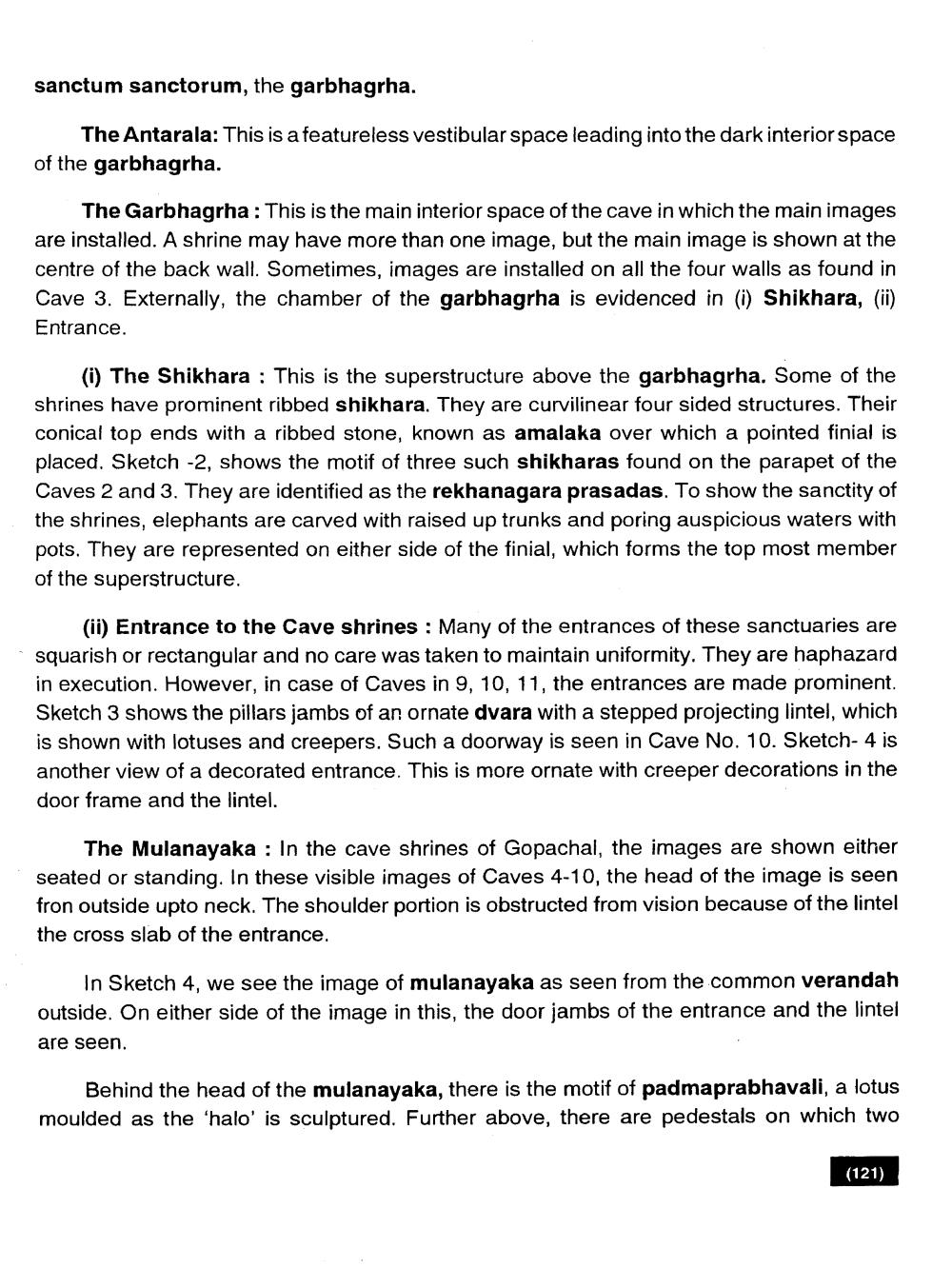________________
sanctum sanctorum, the garbhagrha.
The Antarala: This is a featureless vestibular space leading into the dark interior space of the garbhagrha.
The Garbhagrha: This is the main interior space of the cave in which the main images are installed. A shrine may have more than one image, but the main image is shown at the centre of the back wall. Sometimes, images are installed on all the four walls as found in Cave 3. Externally, the chamber of the garbhagrha is evidenced in (i) Shikhara, (ii) Entrance.
(i) The Shikhara: This is the superstructure above the garbhagrha. Some of the shrines have prominent ribbed shikhara. They are curvilinear four sided structures. Their conical top ends with a ribbed stone, known as amalaka over which a pointed finial is placed. Sketch -2, shows the motif of three such shikharas found on the parapet of the Caves 2 and 3. They are identified as the rekhanagara prasadas. To show the sanctity of the shrines, elephants are carved with raised up trunks and poring auspicious waters with pots. They are represented on either side of the finial, which forms the top most member of the superstructure.
(ii) Entrance to the Cave shrines: Many of the entrances of these sanctuaries are squarish or rectangular and no care was taken to maintain uniformity. They are haphazard in execution. However, in case of Caves in 9, 10, 11, the entrances are made prominent. Sketch 3 shows the pillars jambs of an ornate dvara with a stepped projecting lintel, which is shown with lotuses and creepers. Such a doorway is seen in Cave No. 10. Sketch- 4 is another view of a decorated entrance. This is more ornate with creeper decorations in the door frame and the lintel.
The Mulanayaka: In the cave shrines of Gopachal, the images are shown either seated or standing. In these visible images of Caves 4-10, the head of the image is seen fron outside upto neck. The shoulder portion is obstructed from vision because of the lintel the cross slab of the entrance.
In Sketch 4, we see the image of mulanayaka as seen from the common verandah outside. On either side of the image in this, the door jambs of the entrance and the lintel
are seen.
Behind the head of the mulanayaka, there is the motif of padmaprabhavali, a lotus moulded as the 'halo' is sculptured. Further above, there are pedestals on which two
(121)




